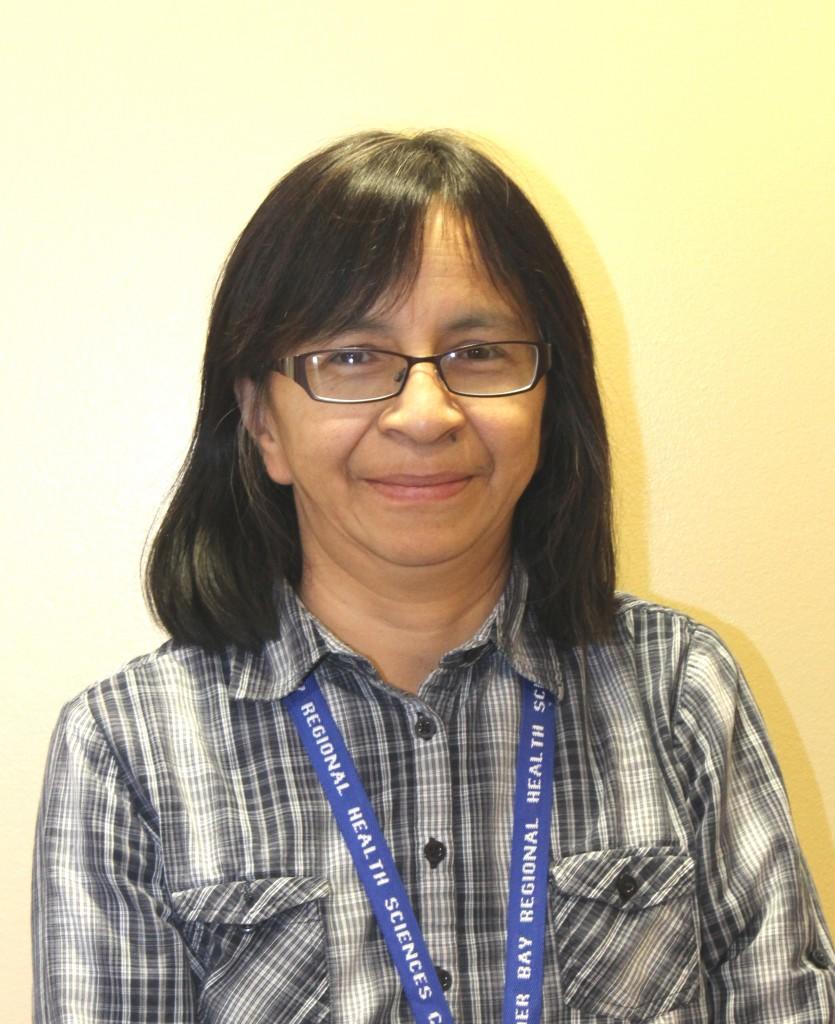Navigating the Way for Aboriginal Patients at TBRHSC
by Maryanne Matthews
 Leona Masakeyash is the newest Aboriginal Patient Navigator to join the TBRHSC team. She works in the Centre for Complex Diabetes Care and offers a variety of supportive services to Aboriginal patients including language interpretation and assistance with discharge planning.
Leona Masakeyash is the newest Aboriginal Patient Navigator to join the TBRHSC team. She works in the Centre for Complex Diabetes Care and offers a variety of supportive services to Aboriginal patients including language interpretation and assistance with discharge planning. For many people living in First Nation communities across Northwestern Ontario, their first visit to Thunder Bay is for medical treatment at the Thunder Bay Regional Health Sciences Centre (TBHRSC). Adjusting to the big city away from friends and family can be difficult, especially for those who cannot speak English.
That’s where Leona Masakeyash comes in, one of TBRHSC’s newest Aboriginal Patient Navigators who works in the Centre for Complex Diabetes Care. Leona, along with the four other Liaisons and Navigators, can provide a number of services for Aboriginal patients, including:
- Interpretive services in Cree, Ojibway, and Oji-Cree anywhere in the Health Sciences Centre
- Support before, during, and after clinical appointments
- Linking patients and families to community resources
- Tele-visitation services with remote family members
- Information and education in a culturally-sensitive manner
- Liaison and advocate between the care team, patients, and families
- Assistance with discharge planning
“I’m here for the Anishnawbe patients,” says Leona. “Being part of a team that is dedicated to patients and their families is rewarding. My favourite part is meeting different people and helping them to feel comfortable about accessing care and navigating their way through the health care system. I hope to help make a difference in their lives“
Originally from Sioux Lookout, Leona previously worked at the Nishnawbe-Gamik Friendship Centre and Meno Ya Win Health Centre, which left her well prepared for her new role as an Aboriginal Patient Liaison at TBRHSC.
“With my background and experiences I can help my coworkers to better understand and address the needs of the Anishnawbe people, while at the same time offering assistance to the patient in a way that is comforting to them,” she says. “Sometimes it’s as simple as spending some time in the waiting room, introducing myself to patients and their families so they know that I’m here to help. It’s important that they feel supported.”
To learn more about Aboriginal Patient Navigators or the other services and supports available for Aboriginal patients and families, visit www.tbrhsc.net/home/aboriginal-health-services/.